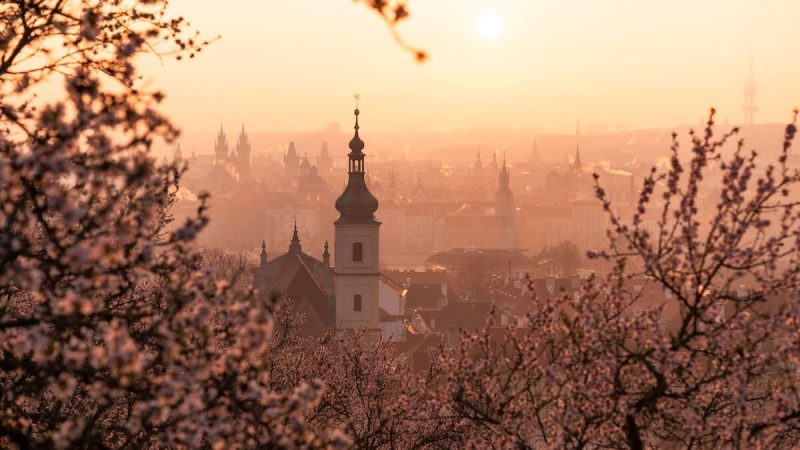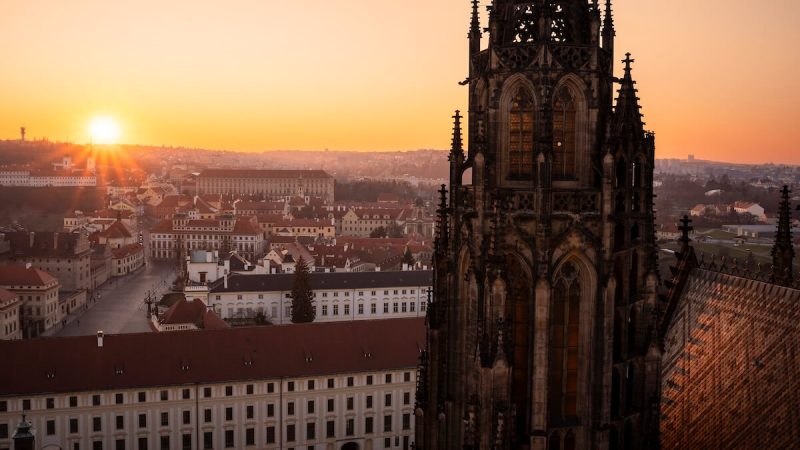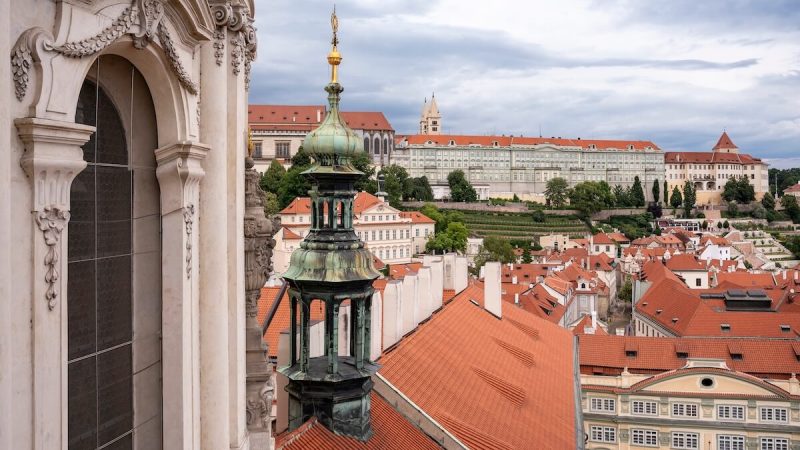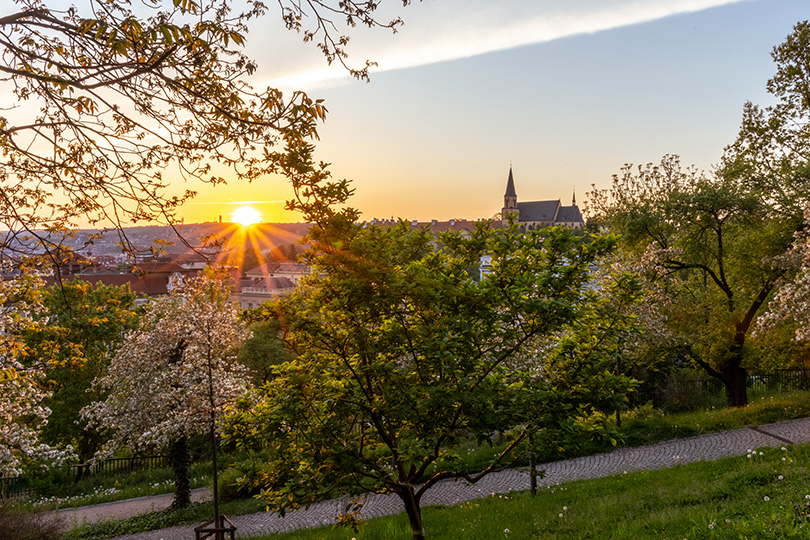Bastion at Calvary
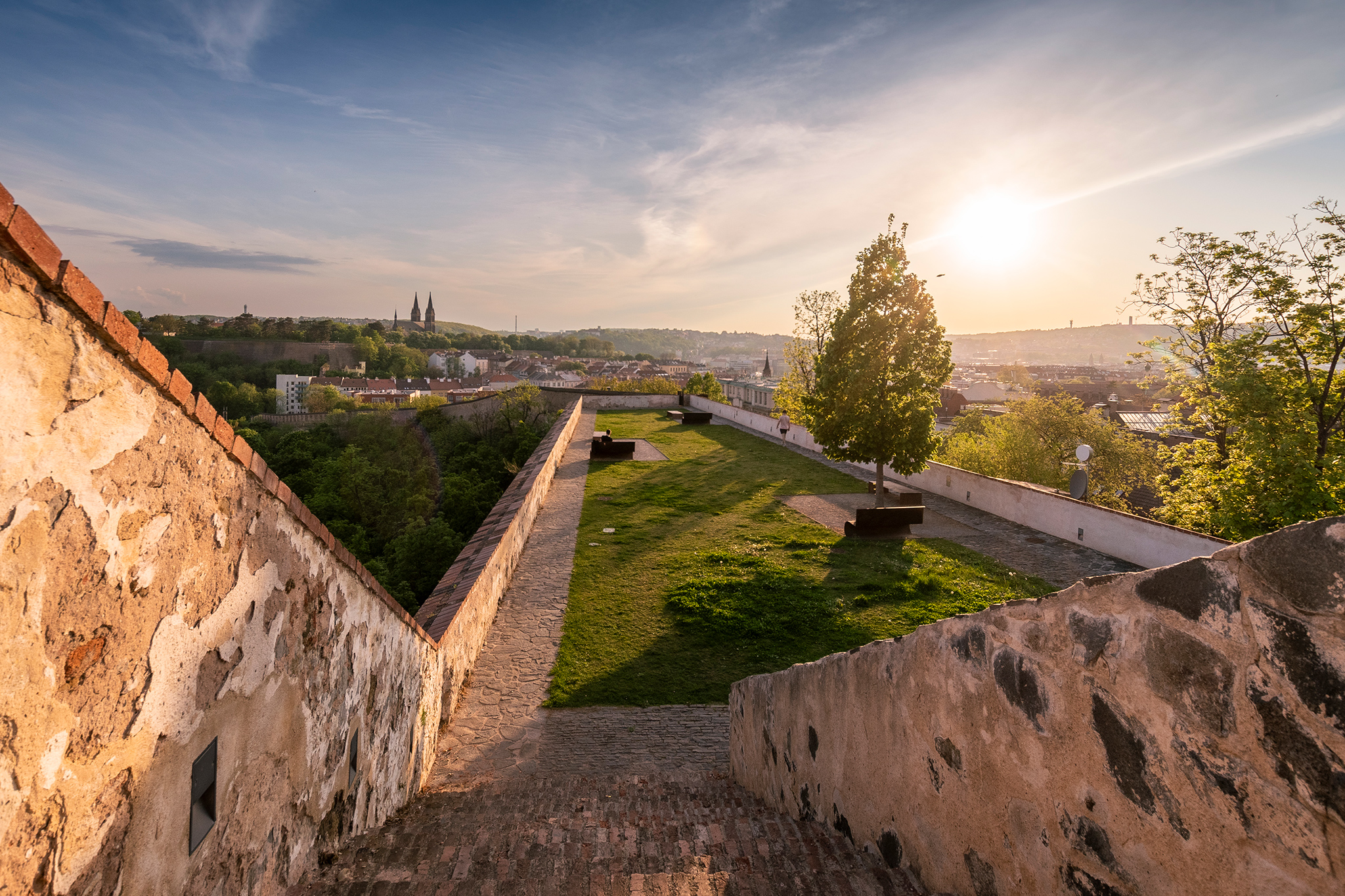
Discover a magically peaceful viewpoint at the Bastion at Calvary. This beautifully revitalised space opens a gateway to a fascinating part of Prague’s history. However, it also offers a taste of the beauty of contemporary art and unique views of Prague.
Just on the edge of New Town, on the borders of the historic city of Prague, we can still find a preserved part of the New Town fortification walls. These Gothic-style mediaeval walls were built right after Charles IV founded the New Town in 1348.
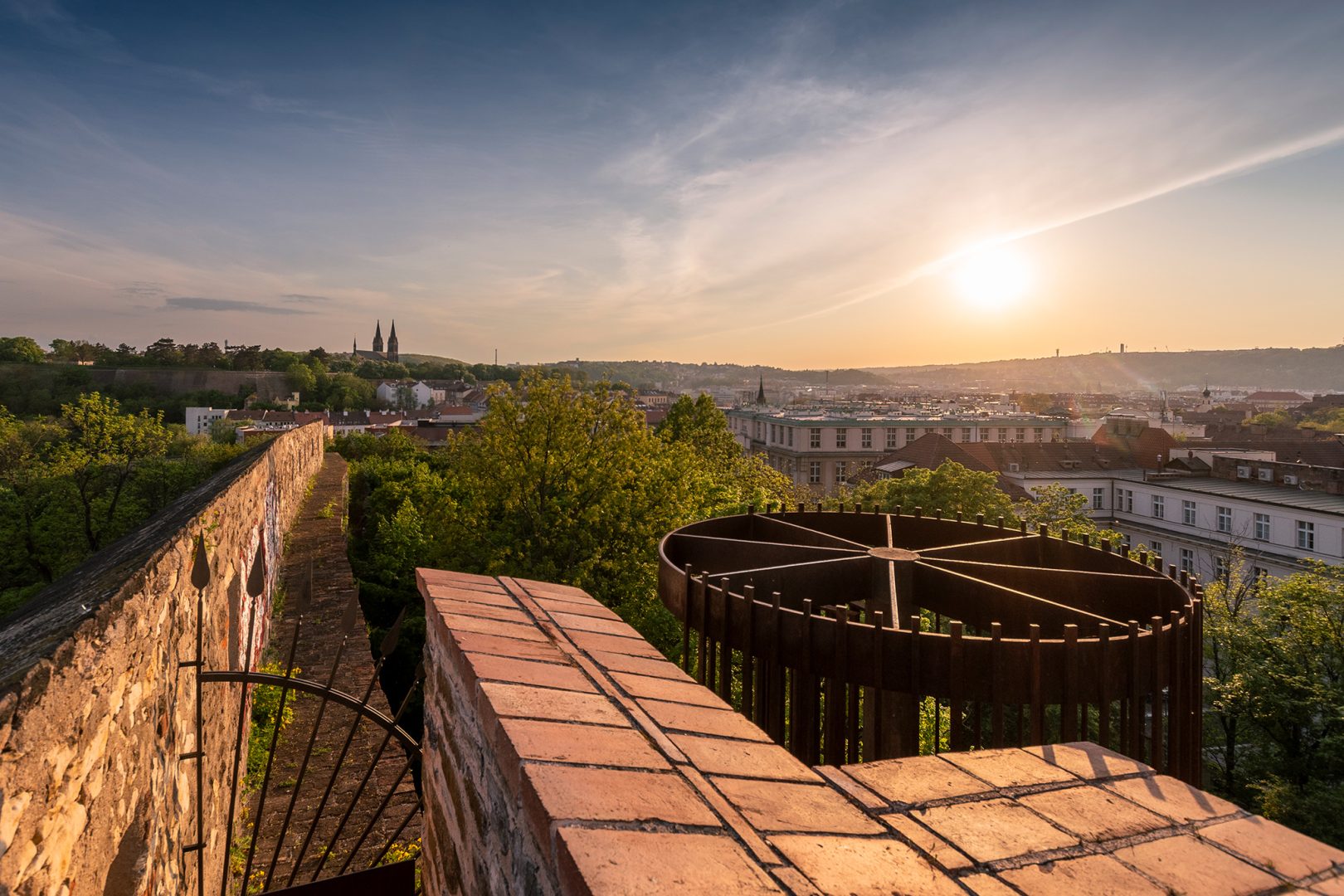
The walls were 3.5 kilometres long, connected to the Old Town fortifications and ran along the Vltava River up to Vysehrad Castle and its fortification. From there continued across the Botic stream valley to Karlov and led to Porici, thus following the current main highway through Prague.
The construction of the New Town defensive walls was technically a very impressive work that took only two years to complete. The walls were about two metres wide and eight to ten metres high, depending on the terrain. There were four gates and, according to some sources, as many as twenty-one towers.
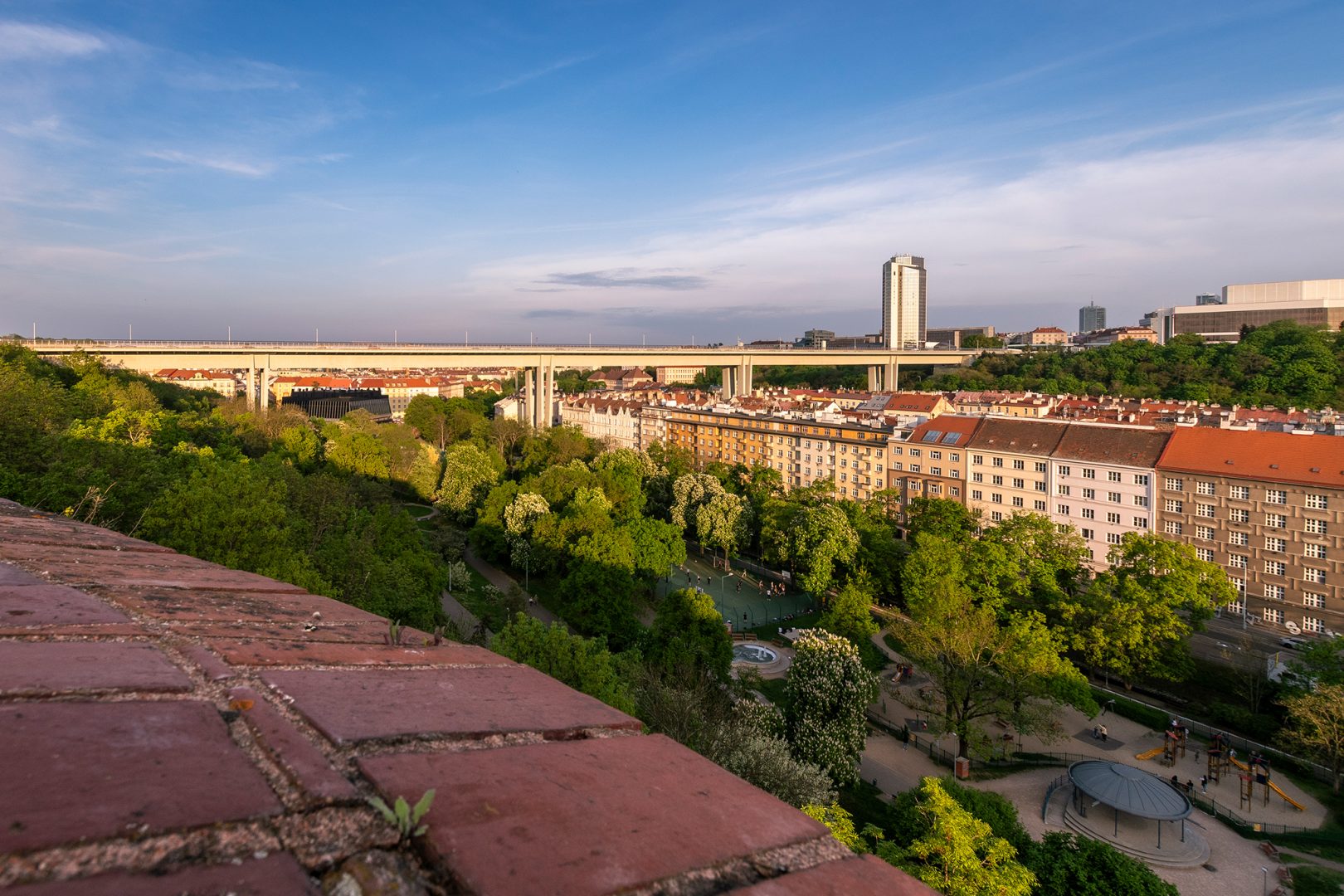
The New Town walls formed an essential part of the city’s fortifications. Only a small part of the Gothic walls, spanning around 620 metres (or 2000 feet) from the Botic strem to the Karlov, has remained to this day.
A memorial plaque located in the lower part of the walls near Botic stream claims that Charles IV, the Bohemian king and the Holy Roman emperor, placed the foundation stone for these fortifications.
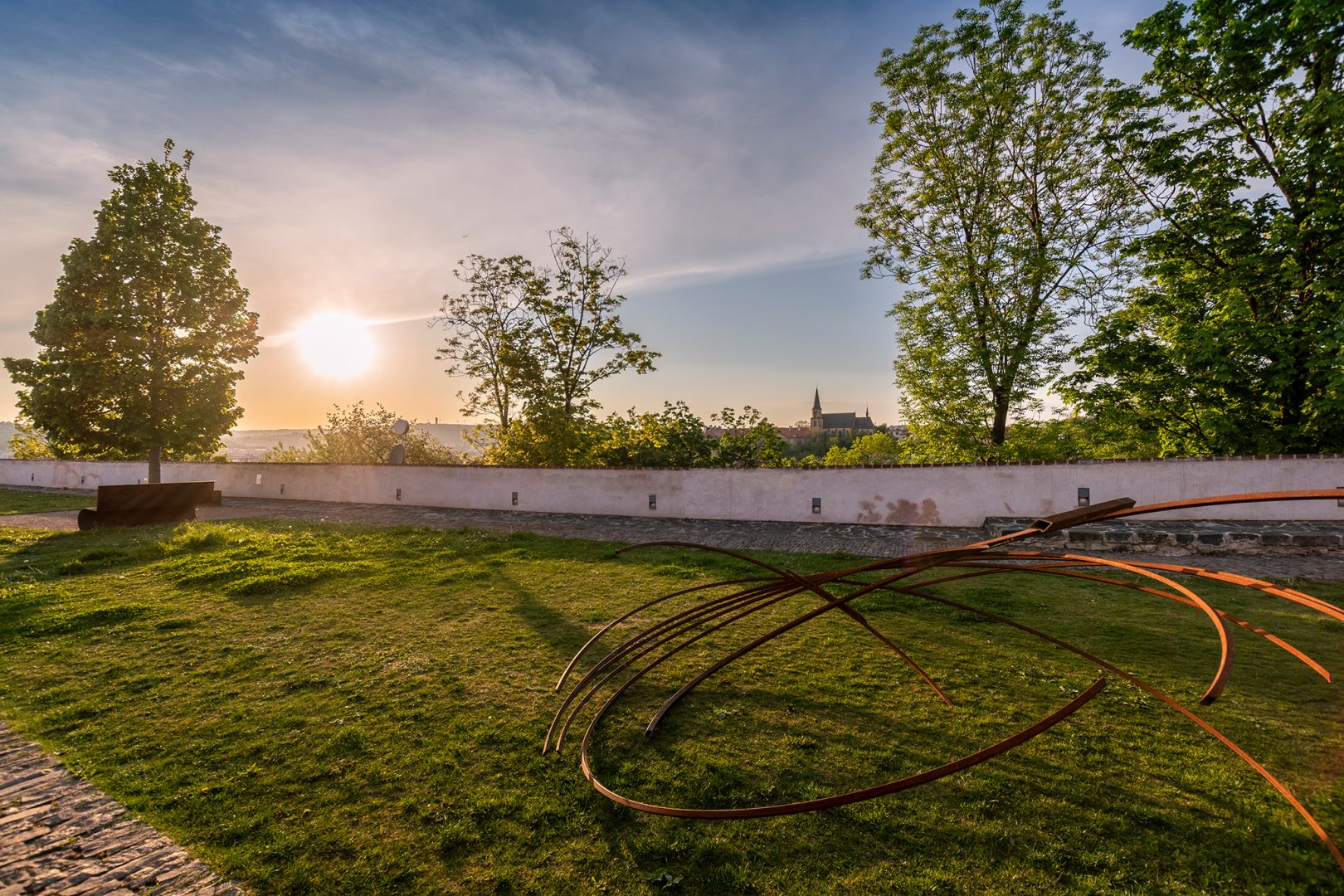
Part of the medieval fortification is Bastion XXXI, also known as the Bastion at Calvary. It is a Baroque structure that was built after the end of the Thirty Years’ War after 1648. Then, a taller Baroque wall was added to the earlier Gothic defence.
In the new levels of modern Prague, the bastion, the remains of the New Town walls, and the fortress of Vysehrad Castle together form an important memorial to the historical fortification of the city.

At this location, there were two bastions, or parts of the defence meant for artillery. The second was located at Karlov, where the Children’s Hospital once stood. It had to be demolished for the construction of the Nusle Bridge.
Completely restored between 2010 and 2012, the Bastion at Calvary area is now a pleasant resting and sightseeing spot. It often hosts outdoor exhibitions of contemporary art, bringing new energy to this historic place.
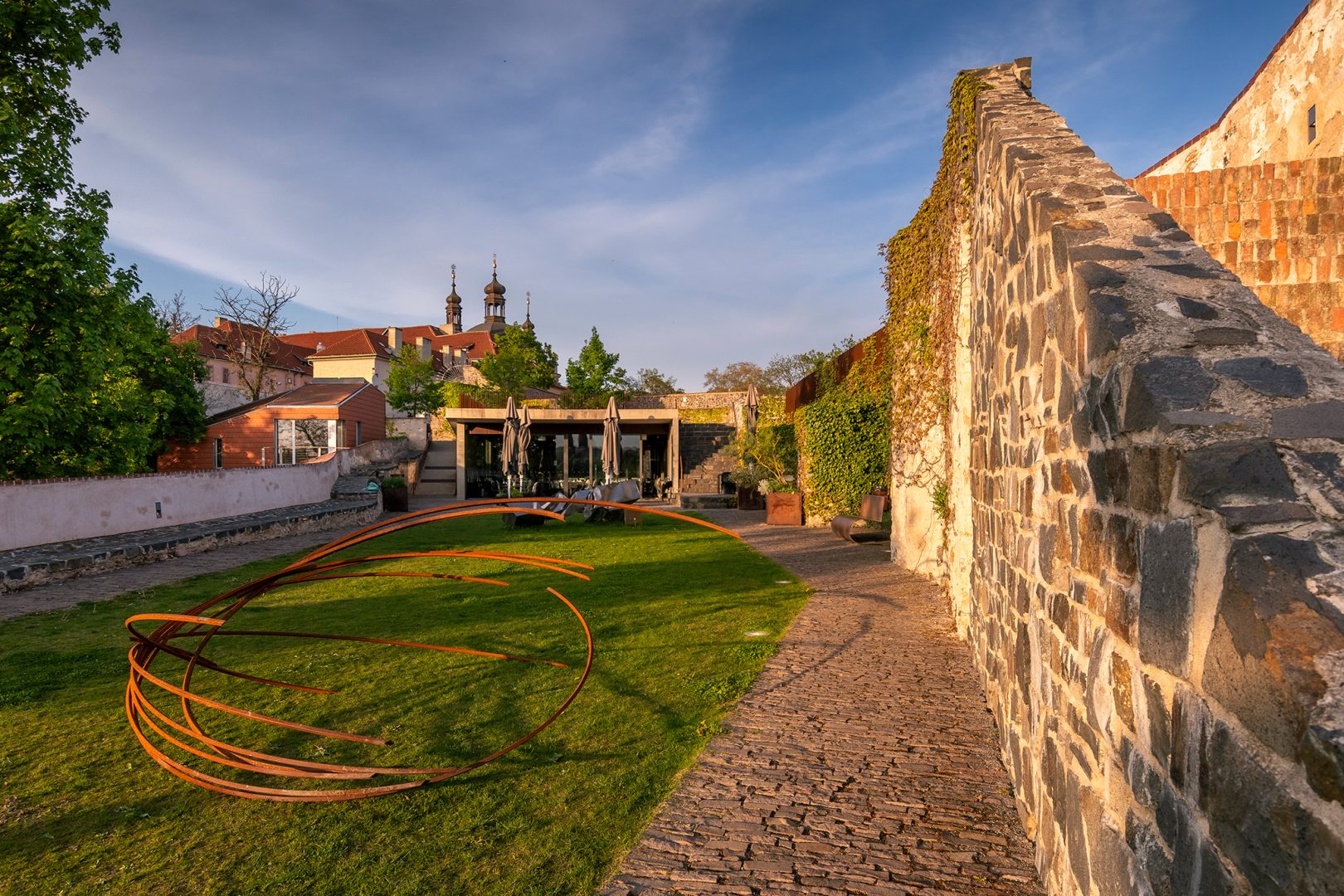
Thanks to the restoration, a new passage through the wall was created from Horska Street to Folimanka Park via the original spiral staircase. The authors of the entire revitalization were awarded the prestigious Grand Prix of Architects for their work.
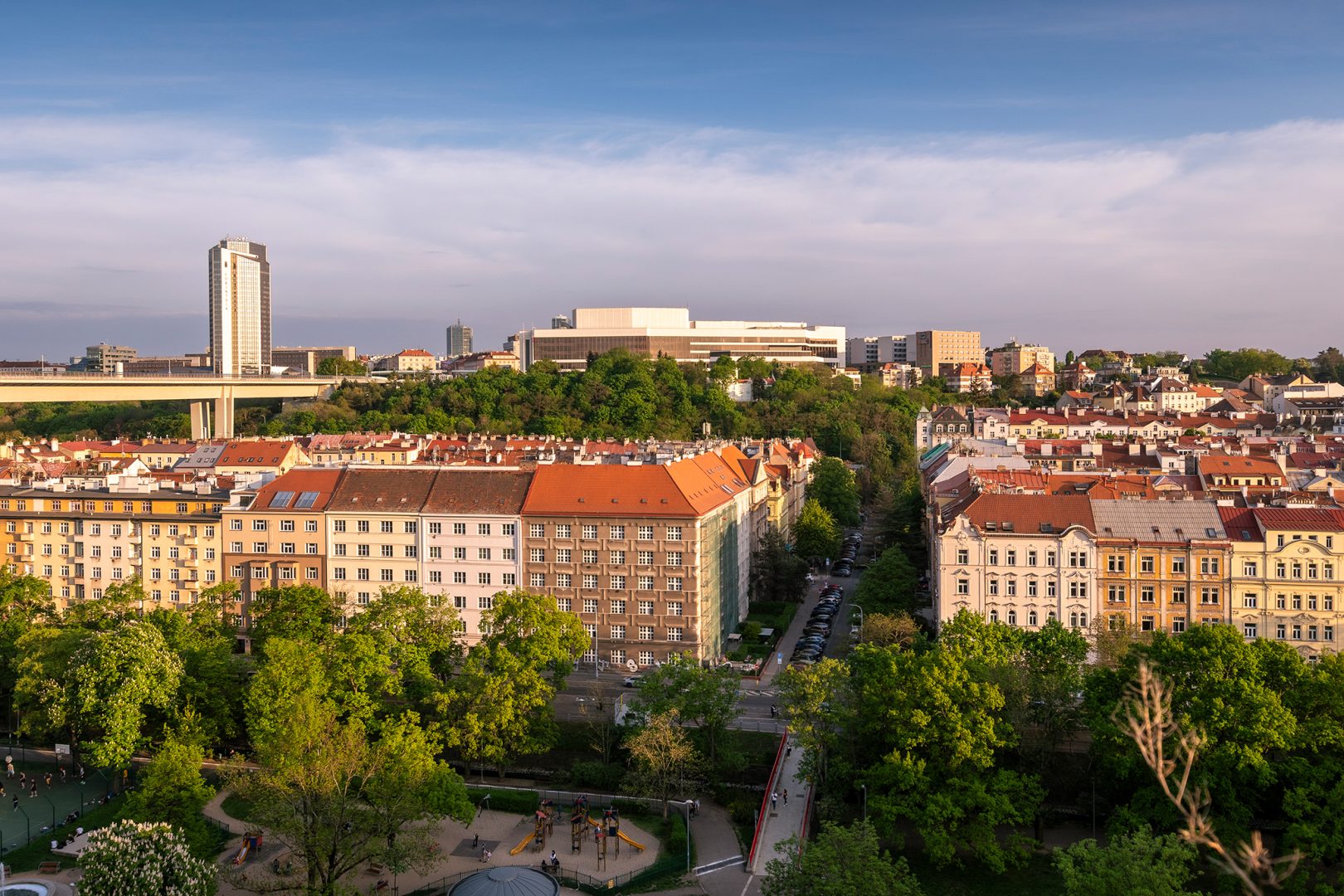
The name Bastion at Calvary (Bastion U Bozich muk in Czech) is due to the niche chapel in front of the entrance. The niche of wall chapel itself dates back to the 18th century.
The contemporary sculpture inside is the work of the authors of the revitalization of the entire space. It takes the form of five thick steel plates into which the symbolic wounds to Jesus are set.
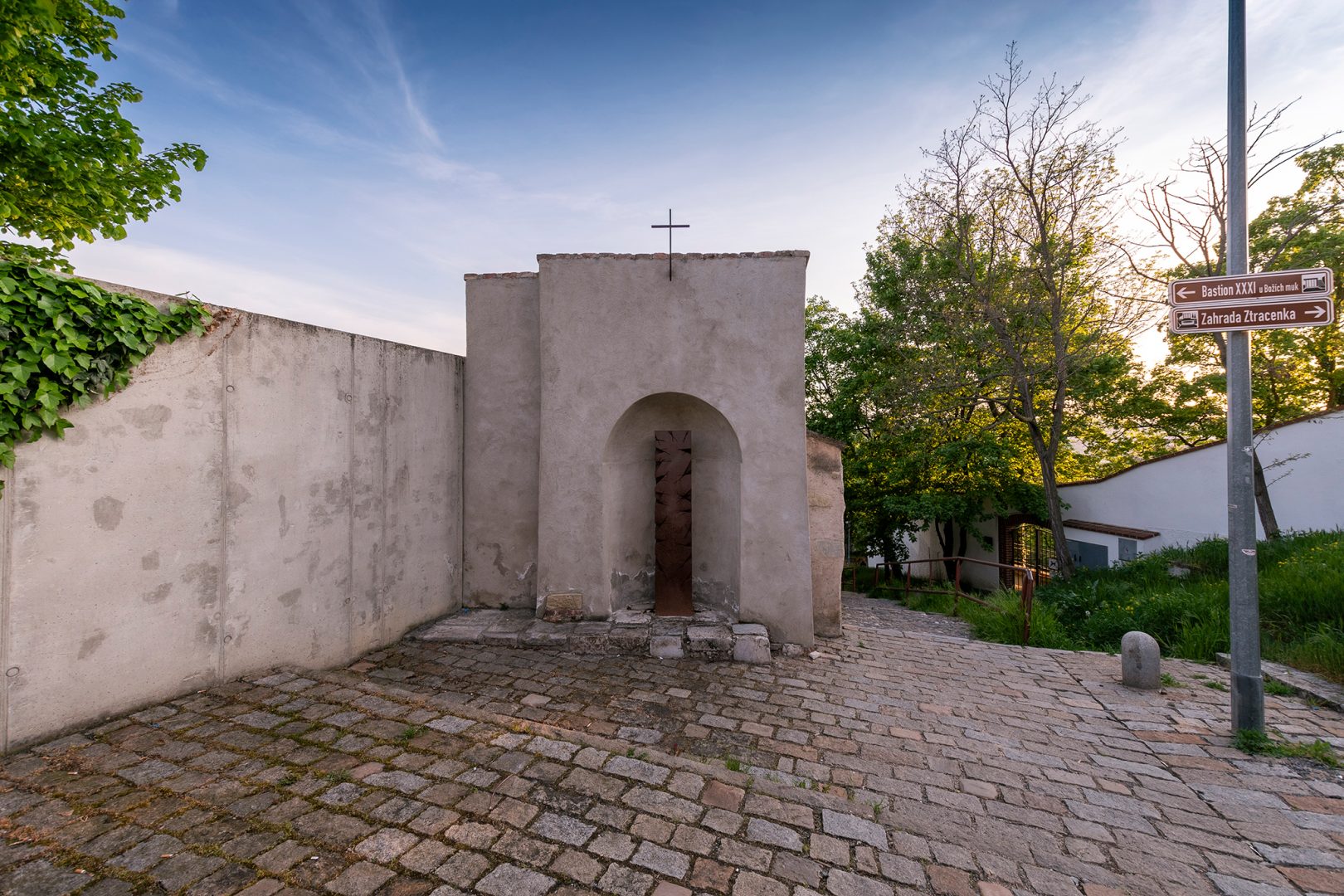
The elevated location of bastion opens up unique views of Prague and its orientation makes this place an ideal place to calmly watch the sunset.
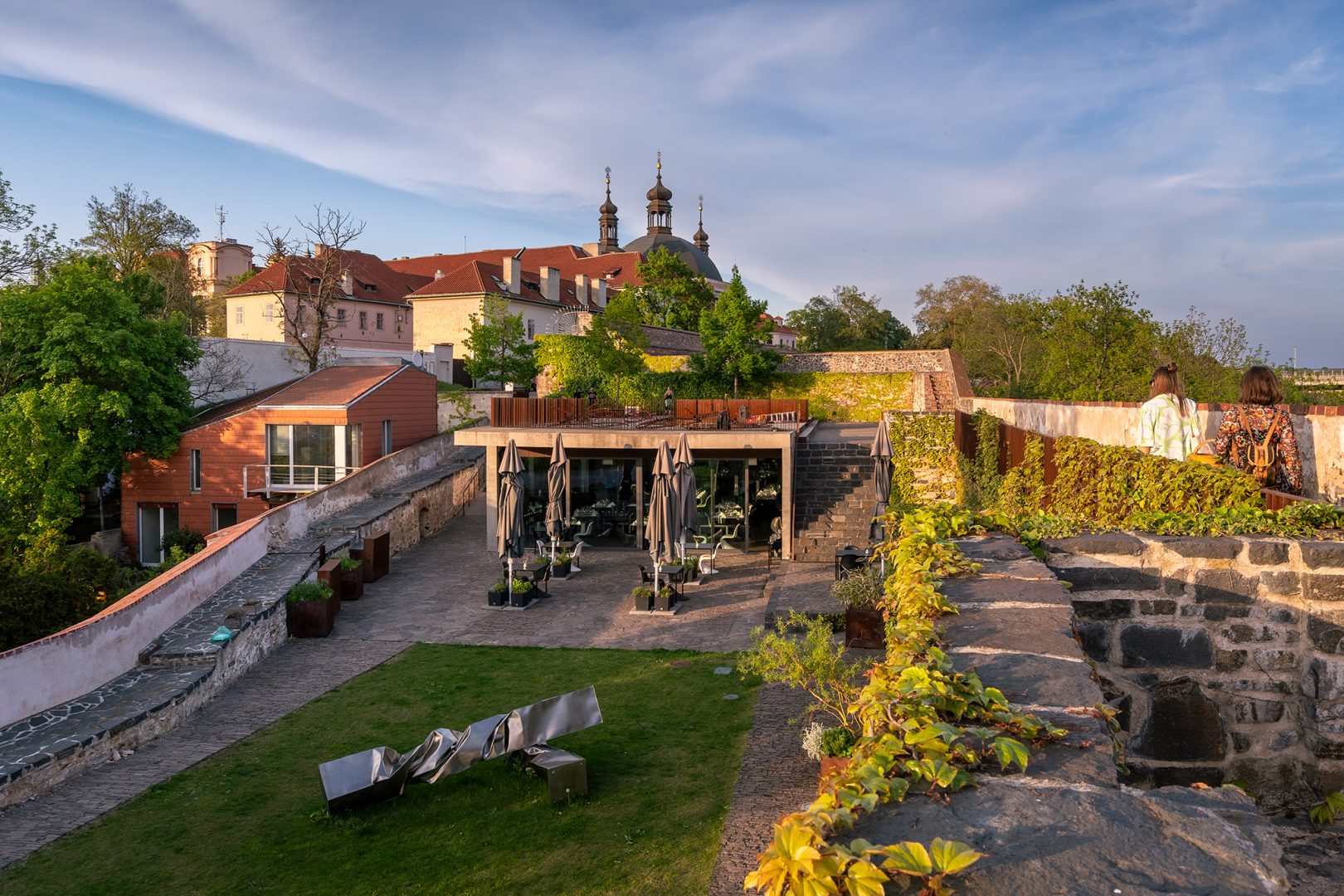
The buildings that will attract you in the view the most are the Nusle Bridge across the valley of the Botic stream, Folimanka Park and the brutalist Congress Centre above it, Vysehrad Castle with the Basilica of St. Peter and Paul. Not to mention also the Petrin Hill with the Petrin Lookout Tower, the Gothic Church of St. Apollinaris and the brick complex of neo-Gothic buildings of the St. Apollinaris Provincial Maternity Hospital by important Czech architect Josef Hlavka.
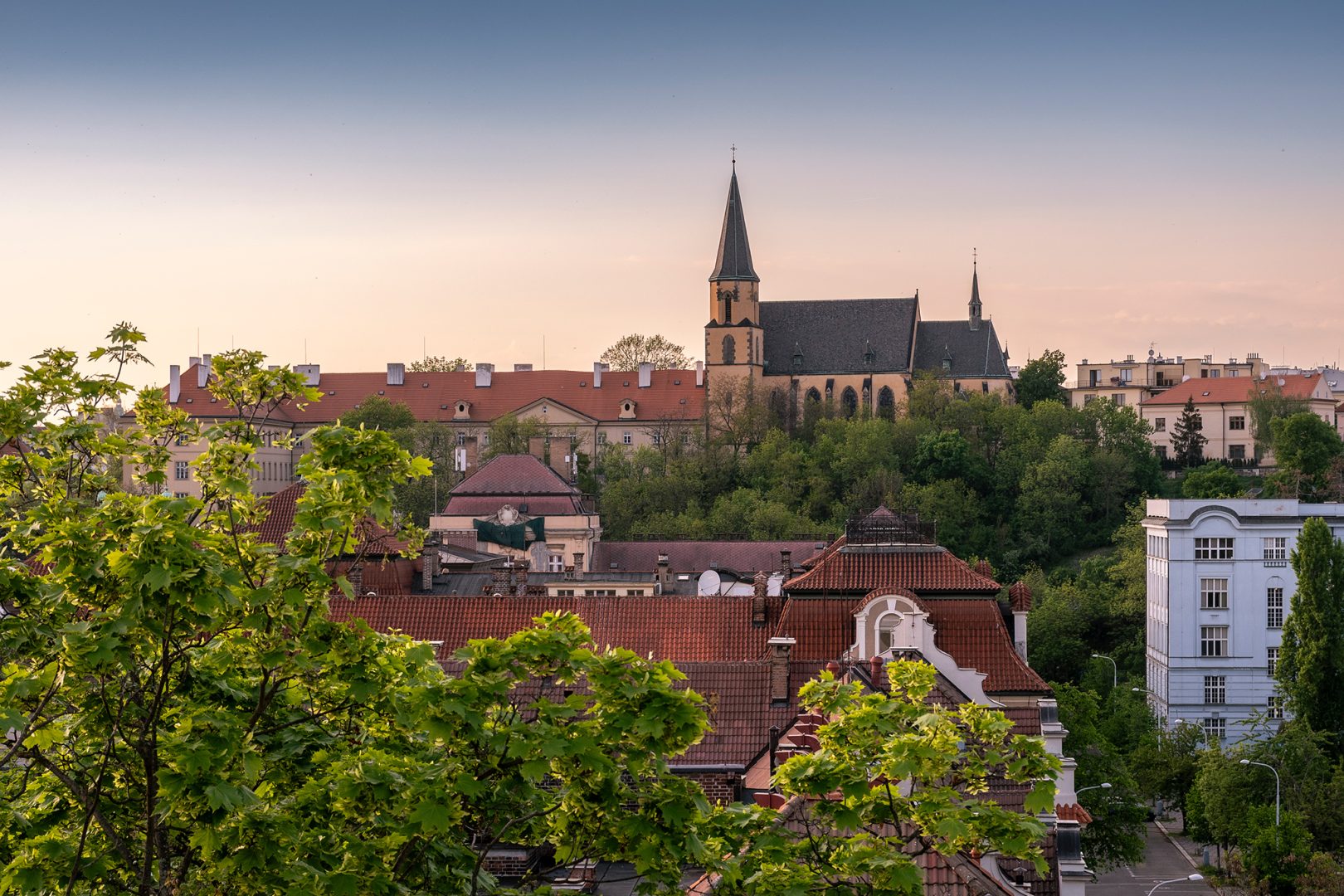
The Bastion at Calvary has recently gained international attention as one of the key locations featured in Dan Brown’s latest Robert Langdon novel, “The Secret of Secrets,” released in September 2025.
In the novel, this medieval fortification is referenced as the Crucifix Bastion and serves as the location for Dr. Gessner’s laboratory, adding a modern scientific element to this historic setting.
For literary tourists and Dan Brown fans, visiting this atmospheric location offers a chance to walk in the footsteps of the fictional Harvard symbologist Robert Langdon while appreciating the genuine historical significance of these well-preserved medieval walls.
Openning hours
Open daily 11 a.m. – 12 p.m.
Dogs are not allowed in the garden.
How to get to the viewpoint Bastion at Calvary
Public Transport
bus Apolinarska (148)
tram Albertov (7, 14, 18, 24, 93, 95)
Car (parking zones on en.mapy.cz)
See the map of all Prague view points.
When you visit the Bastion at Calvary, don’t forget to check out the Ztracenka Garden, which is very close to here.

